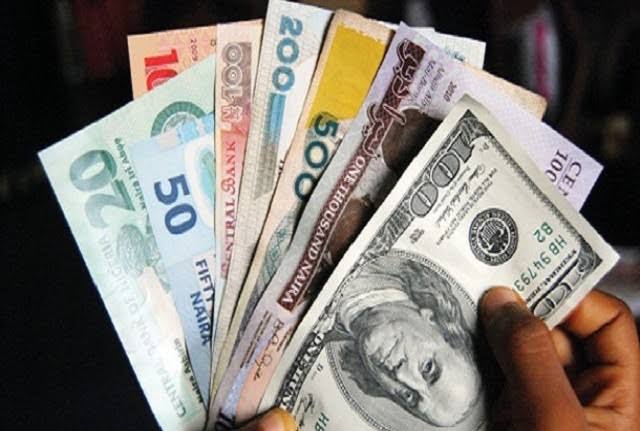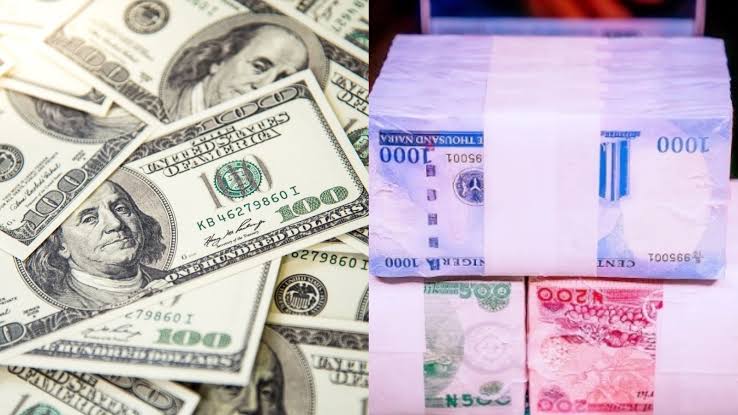Dollar to Naira Black Market Today, Dec 12, 2023: Aboki Forex News
What is the Dollar to Naira Exchange rate at the black market also known as the parallel market (Aboki fx)?
Find below the black market Dollar to Naira exchange rate for 12th December. You can swap your dollar for Naira at these rates.
How much is a dollar to naira today in the black market?
Dollar to naira exchange rate today black market (Aboki dollar rate):
The exchange rate for a dollar to naira at Lagos Parallel Market (Black Market) players buy a dollar for N1250 and sell at N1260 on Tuesday 12th December 2023, according to sources at Bureau De Change (BDC).
Please note that the Central Bank of Nigeria (CBN) does not recognize the parallel market (black market), as it has directed individuals who want to engage in Forex to approach their respective banks.
Dollar to Naira Black Market Rate Today
| Dollar to Naira (USD to NGN) | Black Market Exchange Rate Today |
| Buying Rate | N1250 |
| Selling Rate | N1260 |
Dollar to Naira CBN Rate Today
| Dollar to Naira (USD to NGN) | CBN Rate Today |
| Buying Rate | 980 |
| Selling Rate | 981 |
Please note that the rates you buy or sell forex may be different from what is captured in this article because prices vary.
-
- BUY: naira to pound 1460
- SELL: naira to pound 1470
-
- BUY: naira to euro 1255
- SELL: naira to euro 1275
Canadian Dollar to Naira rate
-
- BUY: naira to canadian dollar 900
- SELL: naira to rand 950
South African Rand to Naira rate
-
- BUY: zar to naira 50
- SELL: yuan to naira 65
UAE Dirham to Naira rate
-
- BUY: naira to Dirham 290
- SELL: naira to Dirham 310
Chinese Yuan to Naira rate
-
- BUY: naira to Yuan 125
- SELL: Yuan to naira 135
Ghanaian Cedi to Naira rate
-
- BUY: naira to cedi 85
- SELL: naira to cedi 100
West African CFA franc to Naira rate
-
- BUY: naira to xof1735
- SELL: naira to xaf1750
Central African CFA franc to Naira rate
-
- BUY: naira to xaf 1650
- SELL: naira to xaf 1700
Australian Dollar (Aussie) to Naira rate
-
- BUY: aussie to naira 600
- SELL: australian dollar to naira 650
Dollar to Naira Black Market Exchange Rates Yesterday:
For reference, the black market closed at ₦1197/$1, determined by the average dollar to naira rates traded at various platforms.
Official Bank Rates (CBN):
The Central Bank of Nigeria (CBN) sets the official exchange rate:
- Buying: ₦831.47 for $1
- Selling: ₦833.48 for $1
Under these official rates, the CBN acquires one US dollar for ₦831.47 and sells it for ₦833.48 through authorized dealers.
Dollar to Naira Bank Rates Today:
Data from various banks indicates the average Dollar to Naira Exchange Rate Today:
GTBank:
-
- Buying: ₦980 for $1
- Selling: ₦990 for $1
Access Bank:
-
- Buying: ₦993/USD
- Selling: ₦990/USD
Zenith Bank:
-
- Buying: ₦993/USD
- Selling: ₦997/USD
Guaranty Trust Bank (GTBank):
-
- Buying: ₦997.83/USD
- Selling: ₦990/USD
First Bank of Nigeria fx rate:
-
- Buying: ₦980/USD
- Selling: ₦975/USD
United Bank for Africa (UBA) Exchange rate:
-
- Buying: ₦991.83/USD
- Selling: ₦997.83/USD
Inquiries Regarding Aboki Dollar to Naira Black Market Exchange Rate Today:
Does Aboki Forex Engage in Currency Trading or Exchange?
Answer: No, Aboki Forex is not involved in the trading or exchange of currencies. It serves as an informational platform, providing details on currency exchange rates across different markets.
How Can I Exchange Currency?
Answer: To exchange currency, contact your local currency exchange market or a bank. They will provide current exchange rates and assist in the exchange process.
Is the Accuracy of Black Market Exchange Rates Consistent Across All Markets?
Answer: No, Black Market Rates provided by Aboki Forex may not exhibit uniform accuracy across all markets. These rates serve as representative averages in local markets and can fluctuate between different locations due to the lack of regulation.
What Sets Apart CBN, I&E, and Dollar to naira today black market exchange rates.
Answer: CBN rates are established by the Nigerian central bank for official purposes. Investors’ and Exporters’ (I&E) rates are regulated for investment and foreign exchange transactions. Black Market Rates represent unofficial rates in the unregulated market, differing substantially from CBN and I&E rates.

T Nigeria’s Crude Oil Production Dips to 1.4 Million Barrels per Day.
Nigeria witnessed a decline in crude oil production to 1.4 million barrels per day in November 2023, as reported by the Nigerian Upstream Petroleum Regulatory Commission (NUPRC).
According to the data provided, the total production for the highlighted month, including condensate production, stood at 1,466,185 barrels per day. Breaking down the figures without condensates, the breakdown is as follows:
– Crude oil: 1,250,299 barrels per day
– Blended condensate: 49,457 barrels per day
– Unblended condensate: 166,429 barrels per day
It’s noteworthy that September and October marked the peak production months for the year, with Nigeria reaching an average of over 1.5 million barrels per day during that period.
During the recent OPEC meeting, Nigeria advocated for an increase in its crude oil production quota for the year 2024. Initially proposed at 1.38 million barrels per day, Nigeria successfully secured a quota of 1.5 million barrels per day for the upcoming year.
Recall that the OPEC crude oil production quota for 2023 was set at 1.78 million barrels per day. However, Nigeria faced challenges in meeting this quota, attributed to issues such as crude oil theft, insufficient upstream crude oil investments, and other associated challenges.
Despite the setbacks, Nigeria’s successful negotiation for a 1.5 million barrels per day quota during the November OPEC meeting underscores the resilience of the country’s oil industry. As the 2024 budget appropriation bill indicates a crude oil production quota of 1.78 million barrels per day in 2024, the industry navigates challenges while aiming for stability and growth.
The fluctuations in Nigeria’s crude oil production remain a focal point for industry observers, with implications for the nation’s economic outlook and global oil dynamics. The upcoming year will likely see strategic measures to address challenges and optimize production levels in alignment with global market demands.

